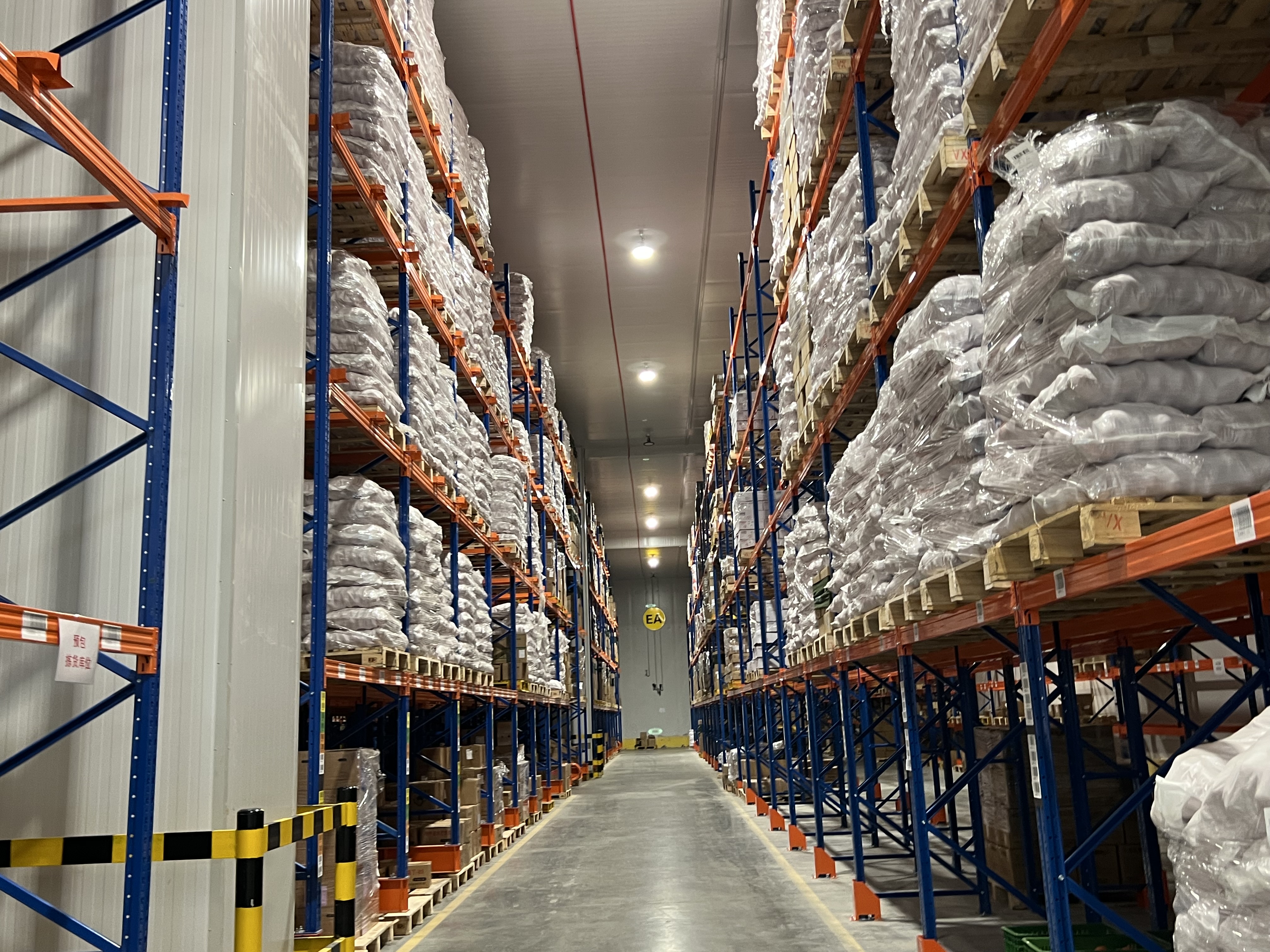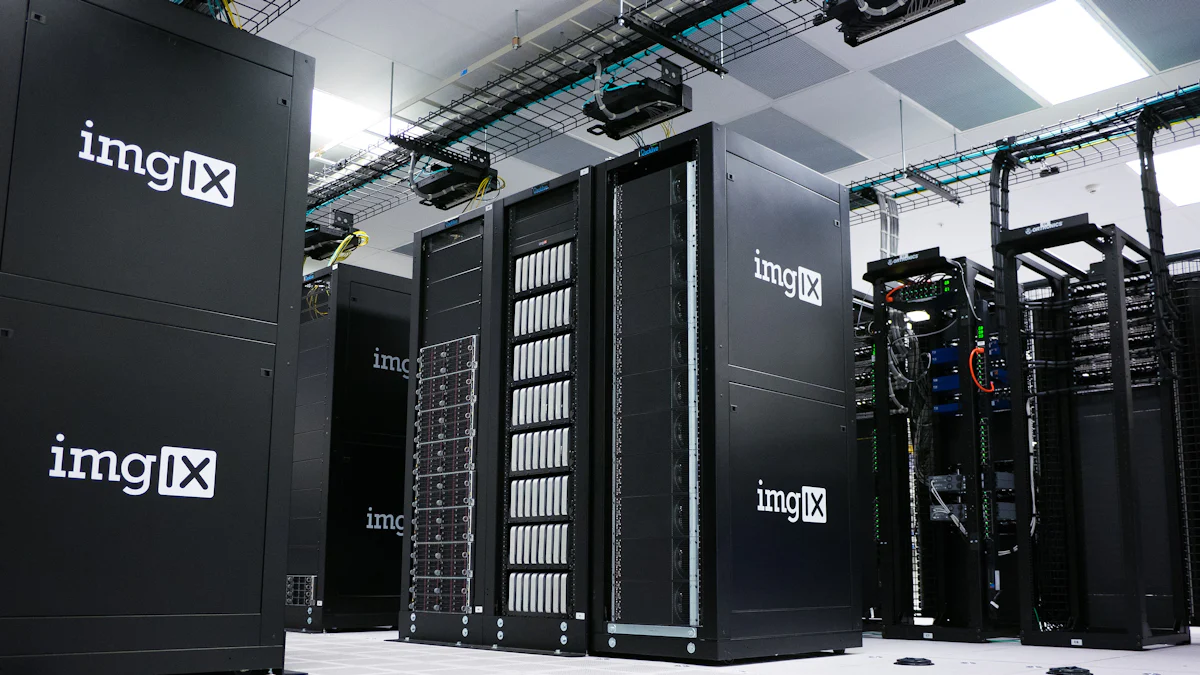Understanding the Features of Logistic Cold Room

A Logistic Cold Room is a specialized storage facility designed to maintain precise temperature conditions for perishable goods. It plays a crucial role in supply chain management by ensuring the safety and quality of products like food, pharmaceuticals, and biotechnology items. The importance of these cold rooms is underscored by the growing demand for perishable goods and the need for reliable cold chain logistics. With advanced temperature control systems, these facilities help preserve product integrity, reduce energy consumption, and support sustainability initiatives in the industry.
Key Features of Logistic Cold Room

Temperature Control
Logistic Cold Rooms excel in maintaining precise temperature conditions. Advanced cooling systems play a crucial role in this process. These systems ensure that the temperature remains consistent, which is vital for preserving perishable goods. High-quality refrigeration units and air coolers, such as ceiling-type models, provide efficient and quiet operation.
Temperature monitoring technology further enhances control. This technology allows for real-time tracking of temperature fluctuations. By using sensors and automated alerts, operators can quickly address any issues, ensuring optimal storage conditions.
Insulation and Construction
The construction of a Logistic Cold Room relies heavily on superior insulation. Insulation materials, like insulated metal panels or sandwich panels, form the core of walls, ceilings, and roofs. These materials offer excellent thermal resistance, which is essential for energy efficiency.
Design considerations also play a significant role. The design must accommodate various temperature zones to cater to different storage needs. Customizable options, such as panel thickness and material preferences, allow for tailored solutions that meet specific requirements.
Energy Efficiency
Energy efficiency is a key feature of modern Logistic Cold Rooms. Sustainable practices include the use of energy-efficient cooling technology. This technology reduces energy consumption while maintaining the necessary temperature levels.
Cost-saving technologies are also integral. Automated storage and retrieval systems, along with advanced refrigeration systems, contribute to overall efficiency. These innovations not only lower operational costs but also support environmental sustainability by minimizing the carbon footprint.
Importance in the Supply Chain
Preservation of Perishable Goods
Impact on Food Safety
Logistic Cold Rooms play a vital role in maintaining food safety. They ensure that perishable goods remain at optimal temperatures, preventing bacterial growth and spoilage. This control is crucial for protecting consumers from foodborne illnesses. By keeping products fresh, these facilities uphold quality standards and enhance consumer trust.
Shelf Life Extension
Cold storage significantly extends the shelf life of perishable items. By maintaining consistent temperatures, products like fruits, vegetables, and dairy retain their freshness longer. This extension reduces waste and supports efficient inventory management. Businesses can meet consumer demand without compromising product quality.
Regulatory Compliance
Industry Standards
Compliance with industry standards is essential for cold storage facilities. These standards ensure that operations meet safety and quality benchmarks. Facilities must adhere to guidelines for temperature control, hygiene, and storage practices. Meeting these standards protects both the business and its customers.
Legal Requirements
Cold storage facilities must follow strict legal requirements. Regulations such as the Clean Air Act and OSHA's Process Safety Management standard ensure safe handling of chemicals and prevent environmental hazards. Compliance avoids fines and legal issues, safeguarding both workers and stored goods. Proper documentation and staff training are critical components of regulatory adherence.
Operational Aspects of Logistic Cold Room
Maintenance and Management
Routine Checks
Routine checks form the backbone of effective cold room management. Regular inspections ensure that all systems function optimally, reducing the risk of unexpected failures. Cold Room Managers at Zion Fresh emphasize that frequent maintenance prolongs shelf-life and minimizes spoilage. By conducting systematic evaluations, facilities can identify potential issues early, ensuring the integrity of stored goods.
Staff Training
Staff training is crucial for maintaining high standards in cold room operations. Well-trained personnel can efficiently manage equipment and respond to emergencies. Training programs should cover essential topics like temperature monitoring, safety protocols, and equipment handling. This knowledge empowers staff to maintain optimal conditions, safeguarding both products and facility operations.
Technology Integration
IoT Applications
The integration of IoT applications revolutionizes cold room management. These technologies enable real-time monitoring and data collection, providing insights into temperature fluctuations and system performance. By utilizing IoT, facilities can automate alerts and adjustments, ensuring consistent conditions. This technological advancement enhances efficiency and reduces manual intervention.
Automation Systems
Automation systems streamline operations within logistic cold rooms. Automated storage and retrieval systems optimize space utilization and improve inventory management. These systems reduce human error and increase operational speed. By adopting automation, facilities can achieve greater efficiency and reliability, supporting strategic planning and organizational goals in cold chain management.
Challenges and Solutions
Common Challenges
Temperature Fluctuations
Temperature fluctuations pose a significant challenge in logistic cold rooms. These variations can compromise the quality of stored goods, leading to spoilage or reduced shelf life. Operators must maintain consistent temperatures to ensure product integrity. Advanced cooling systems help mitigate this issue, but unexpected power outages or equipment failures can still cause fluctuations. Regular maintenance and monitoring are essential to prevent these disruptions.
Energy Consumption
Energy consumption remains a major concern for cold storage facilities. Traditional cold storage solutions often consume large amounts of energy, leading to high operational costs. This consumption not only affects the bottom line but also contributes to environmental issues. Facilities must find ways to reduce energy usage while maintaining optimal storage conditions. Implementing energy-efficient practices and technologies can help address this challenge.
Innovative Solutions
Smart Technology
Smart technology offers innovative solutions to common challenges in logistic cold rooms. By integrating advanced systems, facilities can enhance temperature control and energy efficiency. IoT applications enable real-time monitoring and data analysis, allowing operators to make informed decisions. Automation systems streamline operations, reducing human error and improving reliability. These technologies transform traditional cold rooms into sophisticated, efficient storage spaces.
Alternative Energy Sources
Alternative energy sources provide a sustainable approach to reducing energy consumption in cold storage facilities. Solar panels and wind turbines can supplement traditional power sources, lowering reliance on fossil fuels. These renewable energy options not only decrease operational costs but also reduce the carbon footprint of the facility. By adopting alternative energy sources, logistic cold rooms can achieve greater sustainability and align with environmental goals.
Future Trends in Logistic Cold Room

Technological Advancements
AI and Machine Learning
AI and machine learning are transforming logistic cold rooms. These technologies optimize temperature control and energy efficiency. By analyzing data patterns, AI predicts equipment failures and suggests maintenance schedules. This proactive approach reduces downtime and enhances reliability. Machine learning algorithms also improve inventory management by forecasting demand and adjusting storage conditions accordingly.
Blockchain for Tracking
Blockchain technology enhances traceability and transparency in the cold chain. It records every transaction and movement of goods, ensuring data integrity. This transparency builds trust among stakeholders by providing real-time access to product history. Blockchain also helps in compliance with regulatory standards by maintaining accurate records. As a result, businesses can ensure product quality and safety throughout the supply chain.
Environmental Considerations
Eco-friendly Materials
The use of eco-friendly materials in cold room construction is gaining traction. These materials reduce environmental impact and improve energy efficiency. Insulation made from recycled or sustainable sources minimizes heat transfer, conserving energy. Facilities adopting these materials contribute to sustainability goals and appeal to environmentally conscious consumers.
Carbon Footprint Reduction
Reducing the carbon footprint of cold storage facilities is a priority. Implementing renewable energy sources like solar panels and wind turbines decreases reliance on fossil fuels. Energy-efficient technologies further cut emissions by optimizing power usage. These practices not only lower operational costs but also align with global efforts to combat climate change. By embracing these innovations, logistic cold rooms can achieve greater sustainability and efficiency.
Logistic cold rooms offer essential features like advanced temperature control, superior insulation, and energy efficiency. These features ensure the preservation of perishable goods, making them indispensable in modern logistics. Cold chain logistics rely on these specialized facilities to maintain optimal temperatures, preserving the quality and safety of temperature-sensitive products.
Looking ahead, innovations such as AI, machine learning, and eco-friendly materials promise to enhance cold storage solutions. These advancements will further improve efficiency and sustainability, ensuring that logistic cold rooms continue to meet the evolving demands of the industry.
See Also
Best Cold Storage Companies for Supply Chain Management
Choosing Between Cold Room and Freezer Room for Your Requirements
Arkref Cold Room Equipment Analysis: Top Features

